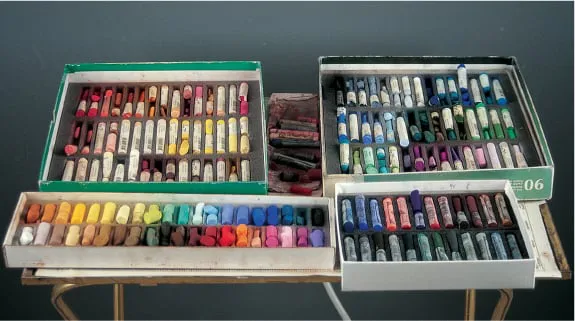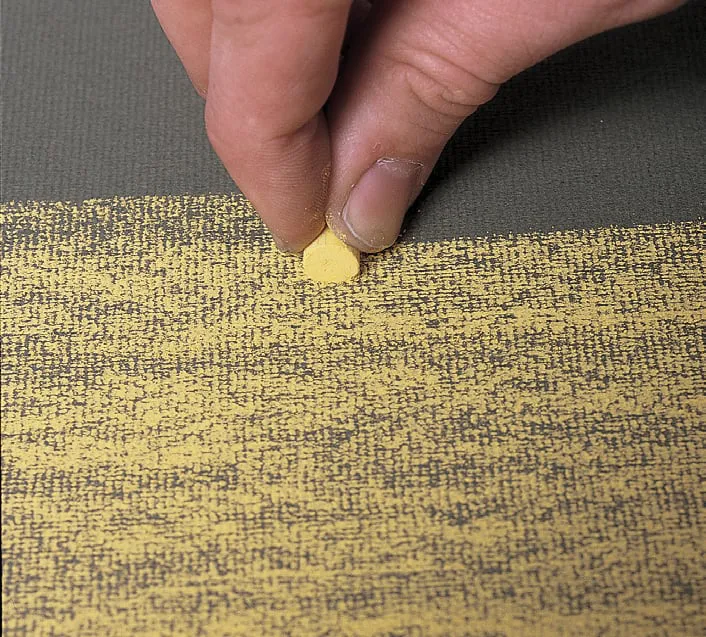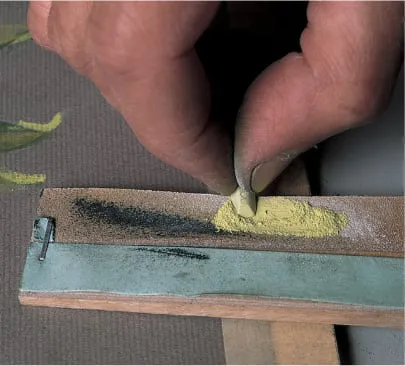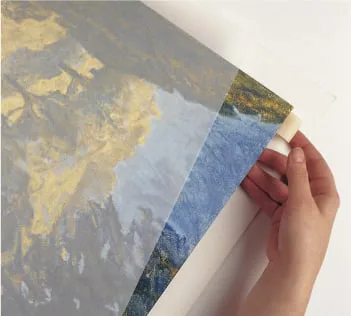
eBook - ePub
The Art of Pastel
Discover techniques for creating beautiful works of art in pastel
This is a test
Share book
- 144 pages
- English
- ePUB (mobile friendly)
- Available on iOS & Android
eBook - ePub
The Art of Pastel
Discover techniques for creating beautiful works of art in pastel
Book details
Book preview
Table of contents
Citations
About This Book
The velvety strokes of pastel have enchanted fine artists for more than a century. From airy strokes to bold marks and soft hues to vibrant shades, the versatility of pastel makes it suitable for a wide range of subjects and moods. Now anyone can experience this multi-dimensional medium with The Art of Pastel. Inside this comprehensive guide, five artists provide instruction for using soft, hard, and oil pastel—each sharing his or her unique approach. From portraits and landscapes to rich floral scenes, this book contains a wealth of inspiring images that artists can re-create step by step.
Frequently asked questions
How do I cancel my subscription?
Can/how do I download books?
At the moment all of our mobile-responsive ePub books are available to download via the app. Most of our PDFs are also available to download and we're working on making the final remaining ones downloadable now. Learn more here.
What is the difference between the pricing plans?
Both plans give you full access to the library and all of Perlego’s features. The only differences are the price and subscription period: With the annual plan you’ll save around 30% compared to 12 months on the monthly plan.
What is Perlego?
We are an online textbook subscription service, where you can get access to an entire online library for less than the price of a single book per month. With over 1 million books across 1000+ topics, we’ve got you covered! Learn more here.
Do you support text-to-speech?
Look out for the read-aloud symbol on your next book to see if you can listen to it. The read-aloud tool reads text aloud for you, highlighting the text as it is being read. You can pause it, speed it up and slow it down. Learn more here.
Is The Art of Pastel an online PDF/ePUB?
Yes, you can access The Art of Pastel by in PDF and/or ePUB format, as well as other popular books in Art & Art Techniques. We have over one million books available in our catalogue for you to explore.
Information
Topic
ArtSubtopic
Art TechniquesCHAPTER 1
INTRODUCTION TO The Art of Pastel
Tools and Materials
You don’t need many supplies to begin painting in pastel; unlike oil or acrylic paints, pastels don’t require additives or brushes. All you really need to get started is a set of pastels and a variety of papers (or supports). Then just add a few additional tools and materials described on these pages, and you’ll be ready! (For oil pastel materials, see page 92.)
PURCHASING SOFT PASTELS
Pastels are available in several forms, including oil pastels; hard, clay-based pastel sticks; pastel pencils; and soft pastels, which are chalklike sticks. Soft pastels produce a beautiful, velvety texture and are easy to blend with your fingers or a cloth. When purchasing pastels, keep in mind that pastel colors are mixed on the paper as you paint, rather than premixed on a palette. (See page 9.) It is helpful to buy a wide range of colors in various values—lights, mediums, and darks—so you will always have the color you want readily at hand.
APPLYING FIXATIVE
Because soft pastels have less binder than hard pastels, they crumble easily, and your finished work can be smudged. Many artists use some type of spray-on sealer or fixative to set their work and prevent it from smearing. (See the demonstration at right.) Some artists don’t fix their paintings because they don’t like the way the varnish affects the quality of the pastel. Instead they preserve the artwork by keeping the layers of pastel very thin as they paint. Then they tap the support several times so that the excess pigment falls off. To preserve your painting, you may want to have it double-matted and framed under UV light-protected glass. A pastel painting that’s properly mounted on archival paper will last for centuries.

Gathering Extras There are other tools that will help you as you paint, such as scissors to trim supports; vine charcoal to layout designs (it’s easy to erase and can be painted over with pastel); a sand paper block as a sharpener; a paper stump for blending; and a razor blade to break the pastels cleanly. You can also paint over your work with denatured alcohol on a soft brush to wash the color thoroughly into the paper.

Picking Soft Pastels Here is a basic set (shown above) that consists of an assortment of 90 medium soft pastels, another assortment of 40 very soft half-sticks, and a set of 24 deep darks. If you’ve never worked in soft pastel, you might want to invest in a 45- or 60-stick set created specifically for beginners. Look for a set that has a wide range of reds, blues, and yellows. If you prefer to buy individual colors, start with black, white, and four values (3, 5, 7, and 9) of permanent red, ultramarine blue deep, and cadmium yellow light (See page 9 for a description of the numbering system.) You can create additional tones by layering and blending these basics, and you can always add more colors later as you develop your own style and preferred palette of colors.

Fixing, Stage One To determine whether the fixative you have will adversely affect the colors, test it first by laying down a thick layer of pigment on a piece of pastel paper.

Fixing, Stage Two Spray the piece with an even layer of fixative. If the color stays true, you can varnish your work as you go, painting over each fixed layer without the risk of smudging.

Sharpening Pastels A sandpaper block is a good sharpening tool for both charcoal and pastel. You can also hone pastels with a razor blade, but rubbing the stick gently across sandpaper or another rough-grained surface is a safer way to form a point or chiseled edge.
CHOOSING SUPPORTS
The texture and color of the support you choose will affect your pastel painting. Because of the delicate nature of soft pastels, you need a paper that has some tooth, or grain, for the pigment to stick to. A rough support, such as sanded paper (made especially for pastel application), will “break up” the applied strokes and create texture. A smooth surface, such as pastel or watercolor paper, will make the unbroken colors appear more intense. Pastel supports are also available in a variety of colors; you can choose a color that offers a contrasting background tone or one that is in the same color range as your subject. (For more on using colored supports, see the examples below right and on page 28.)

Keeping Pastels Clean The powdery texture of pastels can make them messy to handle and store, but you can avoid this problem by storing your soft pastels in raw rice.

Storing Your Work ...